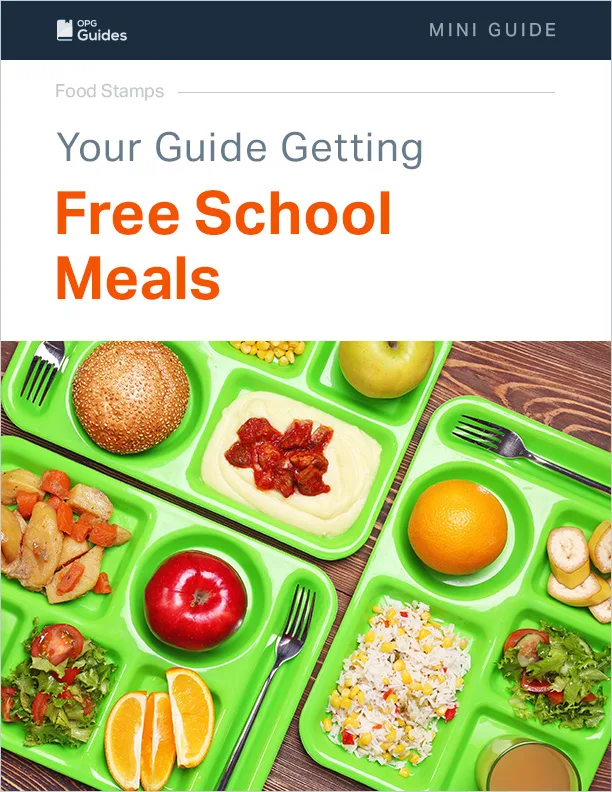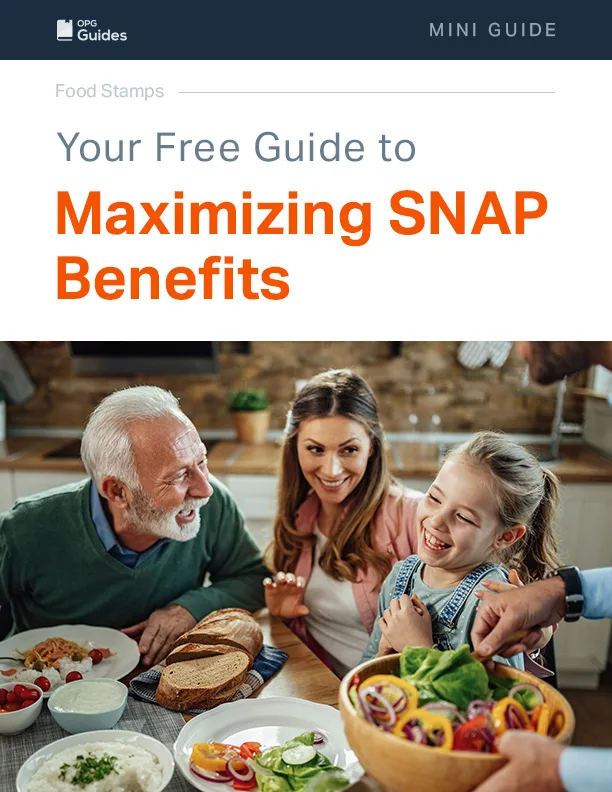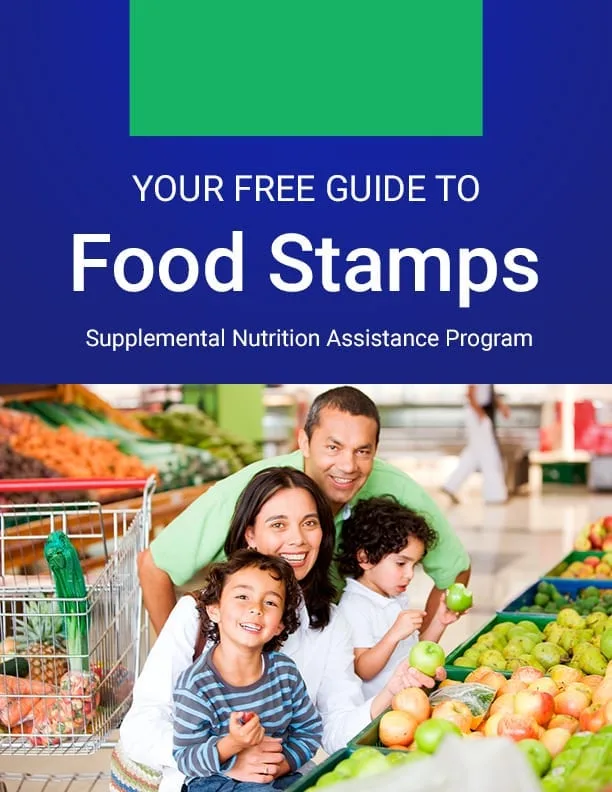Your Free Guide to SNAP for Seniors and Disabled Adults
Your Free Guide to SNAP for Seniors and Disabled Adults
We are privately owned and not affiliated with the government in any way or form.

Introduction to SNAP for Seniors and Disabled Adults
The Supplemental Nutrition Assistance Program (SNAP) aims to provide low-income individuals and families with vital assistance to obtain nutritious foods, but there are some special provisions to understand for senior citizens and disabled individuals.
SNAP, often referred to as food stamps, is a vital federal assistance program that provides nutrition support to eligible low-income individuals and families across the United States. While SNAP serves a diverse population, we will specifically explore the essential aspects that concern seniors and disabled individuals.
An Overview of the SNAP Program
SNAP, administered by the United States Department of Agriculture (USDA), is designed to help individuals and families with limited resources afford a nutritionally balanced diet. It is administered at the state level, overseen by distinct state government agencies.
To access SNAP benefits, a designated representative from a household must complete the application process, involving the submission of detailed information regarding the applicant’s personal and financial background, as well as that of their household.
Here’s a brief look at the program’s core features.
General Program Criteria
To be eligible for SNAP benefits, individuals must meet specific criteria:
- Income: SNAP eligibility is primarily based on income. Generally, households must have a gross income below 130% of the federal poverty level (FPL) and a net income below 100% of the FPL. However, seniors and disabled individuals may have slightly different thresholds. For example, seniors may have a higher income limit, and disabled individuals may qualify for deductions related to disability-related expenses.
- Household Size: The number of people in your household affects eligibility and benefit calculations. A larger household typically qualifies for higher benefits.
- Benefits Calculation: SNAP benefits are calculated using a formula that considers income, expenses, and household size. The USDA provides an online calculator to estimate potential benefits.
Program Criteria for Seniors
To be considered a “senior” for purposes of the SNAP program, you must be at least 60 years of age. If you are applying on behalf of a household, you may be able to qualify for special senior provisions if one member of your household is at least 60 years of age.
Program Criteria for Disabled Individuals
In order to take advantage of special provisions for disabled individuals under the SNAP program, you or one person in your household must meet the program’s definition of “disabled.” You must meet at least one of the following criteria to be considered disabled under the SNAP program:
- You receive Supplemental Security Income (SSI) or Social Security disability or blindness payments.
- You receive state disability or blindness payments based on SSI rules.
- You receive a disability retirement benefit from a governmental agency because of a permanent disability.
- You receive an annuity under the Railroad Retirement Act and are eligible for Medicare or are considered disabled under SSI.
- You are a veteran who is totally disabled, permanently homebound, or in need of regular aid and attendance.
- You are the surviving spouse or child of a veteran who is receiving VA benefits and is considered permanently disabled.
Income and Resources
Seniors and disabled individuals often have different income limits for SNAP eligibility. For example, the income limit may be slightly higher for seniors than for the general population. This is typically determined at the state level.
Additionally, seniors and disabled individuals have different resource limits. Households with at least one senior citizen or disabled person may have up to $4,250 in countable resources. This is much higher than the resource limit for younger applicants, which is currently $2,750.
The term “resources” refers to things you own, like money (in a bank account or on hand). However, certain resources are NOT counted when determining eligibility for SNAP, regardless of age:
- A home and lot
- Resources of people who receive Supplemental Security Income (SSI);
- Resources of people who receive Temporary Assistance for Needy Families
- Most retirement and pension plans
- A vehicle only if it’s needed to transport a physically disabled household member
Deductions

A deduction is a certain amount of money that does not count toward an applicant’s income when applying for a federal assistance program. SNAP has a variety of deductions that can wind up increasing a qualified person’s benefit amount.
Medical Deductions
Seniors and disabled individuals can deduct certain medical expenses when calculating their SNAP benefits. This includes out-of-pocket medical costs, such as doctor’s visits, prescription medications, and medical supplies. These deductions can significantly impact the amount of SNAP benefits a senior receives.
Medical expenses for elderly or disabled members can be deducted if they exceed $35 for the month. However, they must be paid for by the applicant, not by insurance or someone else.
Also, only the following medical costs can be counted toward this:
- Inpatient expenses
- Outpatient expenses
- Most medical and dental expenses
- These can include prescription drug costs, doctor’s bills and over-the-counter medication when approved by a doctor
- Dentures
- Nursing care
Shelter Deduction
Seniors and disabled individuals can qualify for an excess shelter deduction if they meet the criteria. The SNAP program allows these individuals to deduct all shelter costs that are over half of the household’s income.
“Shelter costs” don’t just refer to the cost of a mortgage or rental payment; they also include expenses that are necessary to keep a home up and running. Allowable costs include the following:
- Fuel for cooking and heating
- Water
- Electricity
- The cost of one telephone
- Rent and mortgage payments, plus interest
- Taxes
Other SNAP Deductions
Here are other deductions allowed under SNAP:
- A 20% deduction from earned income
- For households consisting of 1-4 people: a standard deduction of $193
- A dependent care deduction if needed for work, training, or education
- In some states, legally owed child support payments
- A standard shelter deduction for homeless households of $166.81
Other Accommodations
SNAP often provides accommodations for seniors and disabled applicants, ensuring accessibility during the application process. This includes providing information in accessible formats (Braille, large print, etc.) and offering assistance for individuals with communication barriers.
Seniors may also benefit from simplified reporting rules, which means they can have fewer reporting requirements. This can make it easier for seniors to maintain their SNAP eligibility, as they may not need to report changes in income as frequently as younger SNAP recipients. This depends on the SNAP office, so it’s best to reach out to your local office to inquire.
SNAP Application Process
Anyone interested in receiving food stamps must apply for the SNAP program in their state of residence. SNAP application methods vary by state, but you can usually apply in one or more of the following ways:
- Online: You can apply online through your state’s SNAP website or the federal SNAP Benefits portal.
- In Person: Visit your local SNAP office or a designated application site.
- By Mail: Request an application by mail from your local office and return it with the required documentation.
Required documentation may include proof of identity, income, expenses, and citizenship or immigration status.
Foods Covered by SNAP

SNAP benefits can be used to purchase a variety of healthy and nutritious food items. In order to use SNAP benefits, the foods must be approved by the state’s SNAP office.
Here are common food groups that are covered by SNAP:
- Fruits and vegetables
- Meat, poultry, and fish
- Dairy products
- Breads and cereals
- Snack foods and non-alcoholic beverages
There are some things that cannot be purchased using SNAP benefits. These include:
- Hot prepared foods
- These include things like hot coffee or tea, soup and pizza
- Cold prepared foods
- Fresh salads or salad bars
- Sandwiches
- Meat platters
- Fruit cups
- Soft serve ice cream
- Alcohol and food products containing alcohol
- Paper products
- Tobacco and nicotine delivery products
- Medicine
- Dietary supplements
- Soaps and toiletry items
- Cleaning supplies
- Pet food
Additional Resources and Considerations
Many local senior centers and agencies offer outreach and assistance programs to help seniors apply for SNAP. They can provide guidance, assist with the application process, and answer questions about benefits.
Likewise, numerous organizations and agencies run outreach programs to increase SNAP awareness among seniors and disabled individuals. These programs can help connect eligible individuals with the necessary resources.
Advocacy groups and support networks exist for seniors and disabled individuals. These organizations work to ensure that policies related to SNAP take into account the unique needs and challenges faced by these groups. Active participation in these groups can help influence policy decisions.
Conclusion
Understanding the nuances of the SNAP program and its special provisions for seniors and disabled individuals is essential for accessing the nutrition support you need. Whether you are a senior navigating retirement or a disabled individual seeking assistance, SNAP is designed to ensure that everyone has access to nutritious food and can maintain their well-being. By leveraging the information and resources provided in this guide, you can make the most of the SNAP program’s benefits and support.





